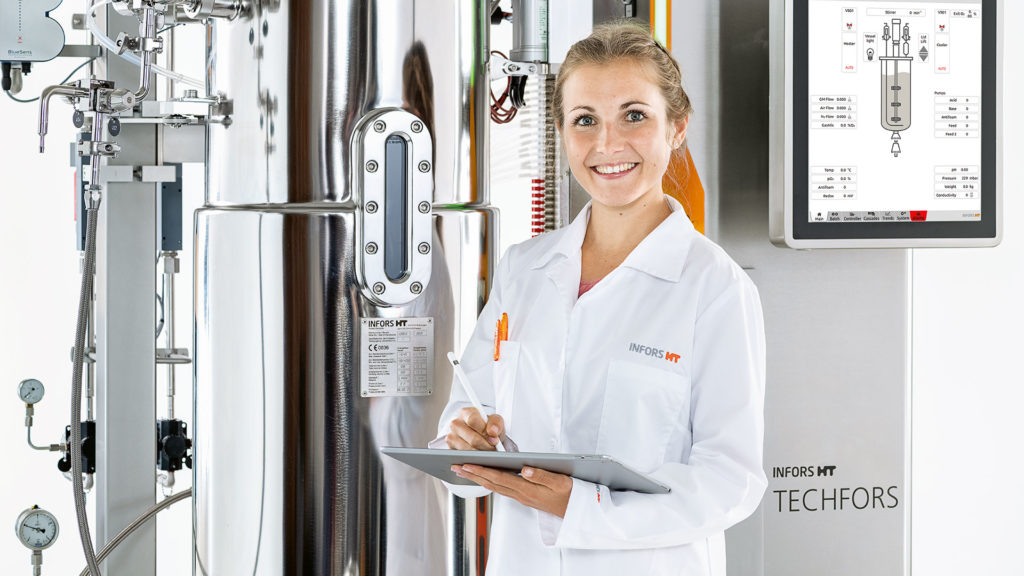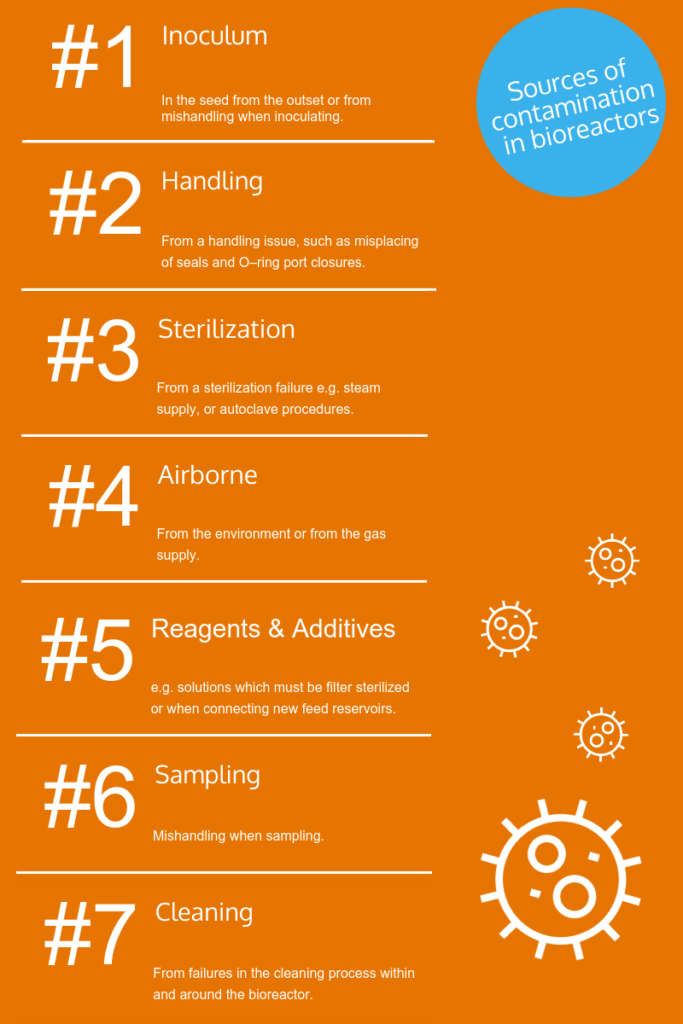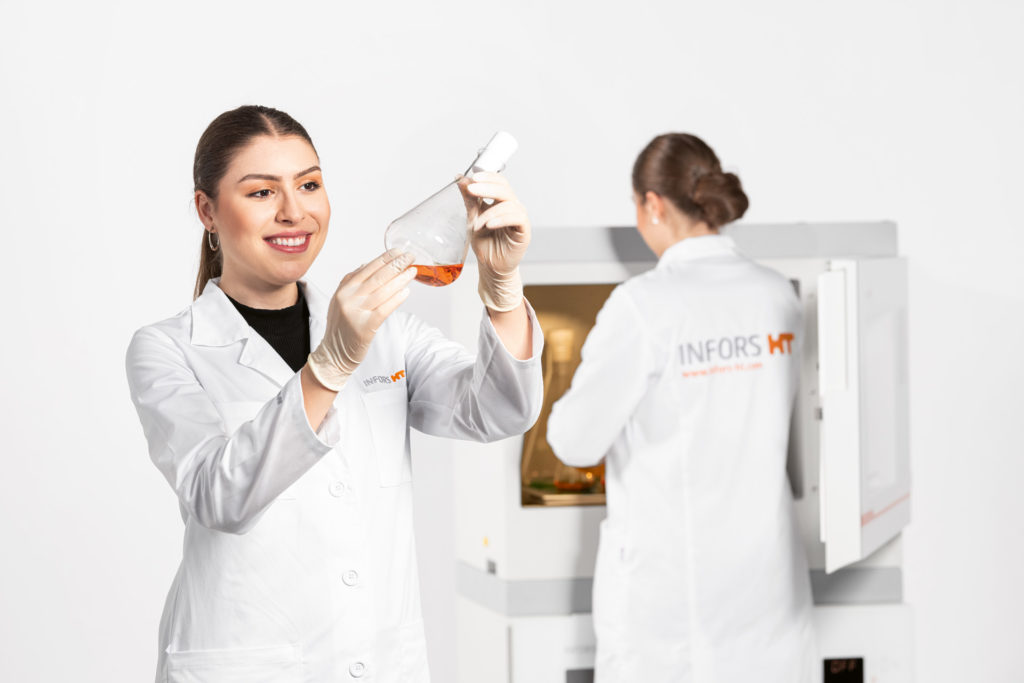Bioreactor manufacturers and users make massive efforts to create a culture environment free from contamination. Despite all this work, sometimes things go wrong. This blog post will cover some of the key reasons for contamination getting in and how to deal with it quickly.

Types of contamination
Contamination issues apply to both microbial and cell cultures, although cells are easier targets since they grow slower and have complex medium requirements.
Contaminants can include species of:
- Bacteria
- Mycoplasmas
- Fungi
- Yeast
- Viruses
- Immortal cell lines invading other cell cultures e.g. HeLa cells
The ability to survive in conditions of low nutrient availability or to form heat-resistant spores are two traits in bacteria and fungi which make them prime candidates as sources of contamination. Yeasts and viruses may also be problematic for cell culture laboratories and production areas.
A key factor in contaminants becoming an issue is the nutrient rich media used for growth of microbes and cells. This can take a low level of contamination from survival mode into exponential growth. The growth rate of the contaminant may then exceed the one of the inoculated organism. The desired organism will be overgrown after some time leading to cell death. A good example of this would be a bacterial contaminant in a cell culture, where the difference in doubling time could be a few minutes for bacteria compared to a day or more for cell culture.
Heat and chemical resistance are also typical features of contaminants. Survival in wet steam at 121 °C for 30 minutes or longer is not possible for cells but is achievable for spores. Even some heat-sensitive contaminants can survive when the steam cannot penetrate through to the cells. Proper cleaning prior to sterilization is vital as dirt or old culture residues can form a protective layer that, especially in an area of pipework, could limit the temperature and thereby the sterilization efficiency.

How to detect contamination
Contamination in bioreactor cultures can negatively impact an organization in many ways: lost batches and production time, cost of investigations, cost of decontamination and compliance issues are among them. The earlier a contamination gets detected the better. Here are some common scenarios that happen if you have contamination:
- Growth occurs earlier than expected and may differ in density, color and smell, compared to an uncontaminated culture. If checked, the rate of substrate consumption, acid production or product formation may help confirm the source.
- Cell culture medium including phenol red dye may change color from pink to yellow as the earliest indicator of contamination due to acid formation.
- An increase in turbidity can also give an early warning.
- For cell cultures contaminated with mycoplasma or viruses, there may be no visual changes to look for, even if using a light microscope. Poor cell growth and overall performance of the culture may be the only clues that a problem exists.
In any of the above mentioned cases, direct observation of sample using staining, microscopy and test kits can all help to confirm the presence of a contaminant.
Sources of contamination

The length of the list explains why dealing with these issues as a series of topics makes sense. Not everything will apply to everyone.
Troubleshooting contaminations of bench-top bioreactors
Check the inoculum
- Look backwards and check that the seed train has not been contaminated. Re-plating a small sample of inoculum on a rich growth medium might reveal a hidden “passenger”.
- Use a secure inoculation technique. The “aseptic pour” into an open port presents multiple chances for a contaminant to get in.
- A cleaning and disinfection procedure for laboratory equipment upstream of your bioreactor can help keep contamination from spreading via the seed culture.
Check the sterilization process and equipment
- Check the autoclave sterilizing temperature is correct using tape or test phials.
- If possible, use an external temperature sensor for the autoclave temperature mounted in the temperature sensor pocket of the bioreactor vessel.
- Autoclaves which apply a vacuum prior to heating up offer much higher success rates in killing germs. Make sure ALL lines dipping to into liquid are clamped off to prevent loss.
- Dry sterilization of any item will always take longer and/or need higher temperatures than using wet steam.
- If media bottles are sterilized in an autoclave, there must be gaps for the steam to penetrate. Tight packing may prevent items in the center receiving the full effect.
- If contamination due to a spore-forming organism keeps coming back, even after the vessel was autoclaved (sometimes after several days of cultivation), it is best to completely disassemble the vessel and tubing. Repeatedly autoclave with pauses between cycles to give spores a chance to germinate. Reassemble and then autoclave again. This makes sure, that the steam can really get into every nook and crevice.
Check all bioreactor components and assembly
- Clean thoroughly and remove all traces of solid material
- Make sure the vessel and port O–rings are not flattened, torn, or feathered. Sometimes a poor fit may be the cause even if the O–ring is intact. Do not forget the O–rings on and in sensors. Replace O-rings after 10-20 sterilization cycles to ensure a good seal
- Check reagent bottle seals and feed lines for damage.
- Check the vessel seal. If a mechanical seal is used, check the lubricant is not leaking out constantly. A damaged seal running dry will make a loud whistling noise which is easily identified.
- Sensors with a reservoir may have a contaminant present in the electrolyte.
- An exit gas filter which is wet may allow grow back of microbes able to pass through the filter pores. Ensure an efficient gas cooler is used and air flow rates do not go above 1.5 Vessel Volumes per Minute (VVM). This prevents droplet entrainment in the exit gas stream.
- If flexible tubing lines becomes contaminated, replacement is the only effective way to make sure no contamination remains.
- Preassemble as much as possible, e.g., connect tubing and media bottles. Every connection to be made after autoclaving poses a contamination risk.

Check the O-rings on all components installed on the lid, regardless of whether these are intakes, sensors or plugs.
Topics related to in-situ sterilizable bioreactors
Many of the points relating to bench-scale bioreactors also apply to larger in-situ sterilizable units. Checking O–rings, drive shaft seal, vessel seals and valve seals should all be part of routine maintenance.
Some issues relate to the construction and use of in-situ sterilizable systems, including:
- Sterilization times/temperatures not set correctly
- A pressure leak from the vessel or pipework preventing sterilization temperature being reached
- A failed or misaligned mechanical seal allowing a small gap for ingress of contaminants.
- Leakage of lubricant
- Cooling water may harbour microbes, and this could reach the vessel through a crack or gap in a heat exchanger or a faulty valve seat.
- Use of piercing septa needs skilled handling. Re-use of septa can leave a split in the silicone.
- Steam condensate traps must be checked for correct operation i.e. only open at the correct temperature.
Testing for success of steps taken to eliminate contamination
This breaks down into three sub-categories:
Checking the biological input material, services, and environment
Any suspect material can be checked by Gram staining and examination under a microscope. A Gram-positive rod such as bacillus sp. will stand out in a sample of yeast culture, for example. Culture samples, environmental air samples and services water can be plated out on a general enrichment medium and any growth isolated and identified. Different growth temperatures and times may need to be tested to ensure nothing has been missed.
Checking the bioreactor hardware and automated processes before use
A stainless-steel vessel can be tested using overpressure to look for leaks. A significant drop in pressure over time shows some part of the system is not sealed properly. Filter integrity can be tested with devices available from the filter manufacturer. The effectiveness of steam sterilization can be tested by leaving uninoculated medium in the vessel for several hours/days. You can then see if growth occurs under the normal operating conditions of the bioprocess.
More sampling, chemical analysis and plating during the bioprocess may detect contamination before it is apparent in the vessel. The aim will be for a “quick kill” if contamination is present, to minimize lost time and resources.
Checking the methodologies of the bioprocess to minimize contamination risk
This can be preparation of media and reagents, choice of components, sterilization methods and operator interactions. Good record keeping allows an audit of the different steps to discover the point in the process when contamination first occurred. Reducing manual handling such as sampling by adding online sensors will reduce the opportunities for a contaminant to enter the vessel. Regular checks of the work area with swabs will give confidence that the microbial load of the environment is under control. If not, cleaning and sterilization of the whole work area with e.g. formaldehyde may be necessary.
House services such as air and water supplies can be separately assessed and treated to close off this route for contamination of a bioreactor. This is normally the task of Estates Management or your equivalent. Good record keeping of all these approaches will aid the isolation and removal of any problems quickly.

Summary
This short guide is only an outline of what’s possible. The subject is large and topics like the statistical basis for sterilization have not been included. Finding contamination is the top priority. This sounds obvious, but a quick kill of the process will save cost and resources before any investigation has even started. Devise tests for each contamination possibility and use them consistently. Good record keeping will ensure the next problem is fixed at least as quick as the last.
The main points considered are
- Contaminants cover the whole spectrum of organisms from viruses to mammalian cells, via bacteria yeast and fungi.
- Cell culture can be especially susceptible to “hidden” contamination which can be hard to spot and eliminate.
- Simple checks can be used for bench-scale bioreactors, with special attention on visual checks and confirmation of sterilization procedures.
- For in situ sterilized bioreactors simple tests can reveal potential problems before the bioreactor has been inoculated.

siva prasad reddy
explaine very well ,thank you
Jawad Nazari
I product biofertilizer with ferementation in bioreactor by 2000 L content. In first sampling dont show a contamination but in 2th sampling found a fungi contamination.
What do you think about this problem?
Ashley Treas
Interesting, I would suggest considering looking into the list in the blog under the "Topics related to in-situ sterilizable bioreactors" section.
Barnabas Cheruiyot
Very useful information
Mehdi Miradi
Very good , thanks